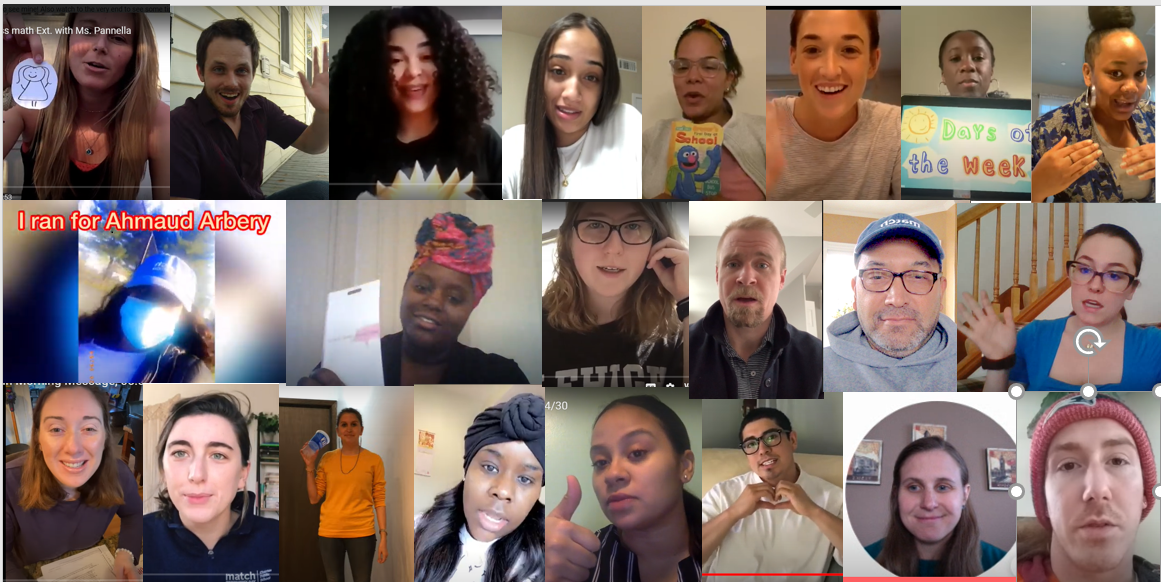Teachers and staff at Match Charter Public School have been unstoppable in their move to remote learning during the current global pandemic. With a two-day turnaround, they converted their courses to be done remotely, centering our students’ needs. Similarly, during the recent visible episodes of police brutality and oppression, and violence against Black people in our country, staff have prioritized the well-being and needs of our students and families. Countless staff have created space for processing and have committed to or recommitted to doing the anti-racist work needed to truly give our students, especially our Black students, what they need and deserve. Thank you for the creativity, dedication, openness to change, and care you have demonstrated during this time.
I want to celebrate and highlight many of the great practices of Match educators to respond to the dual crises of COVID-19 and systemic racism. At the same time, I want to call on myself as a white woman to be more vocal, more thoughtful, more loving, more uncomfortable, more forceful, and more consistent in ensuring our teaching practices are anti-racist. I must be a better leader in responding to both the individual racism and structural racism in our community and school. I must make it clear that I see anti-racist education as deeply connected to the equity work that is at the heart of schooling, both remotely and in person. I see in our staff’s current creativity and community orientation a call for me to commit to centering our students needs and better supporting anti-bias and anti-racist teaching and learning.
Here are two particular current teaching practices that stand out to me as helping us respond to this moment in which we must collectively lead:
Offering voice and choice - I have seen tremendous strides both this year and during this remote period in offering students assignments and class structures that provide more opportunity for voice and choice. Time to talk, space to hone and express opinions, the chance to choose format or topics, as well as more control over content and assignments is a perfect fit for remote learning as it invites students into learning more meaningfully. I also see it as anti-racist because it centers the voices of our students and gives up space, power, and control to students. Here are some recent examples that inspire me:
Assigning work connected to real life, including this geometry example or this science one, that make content relevant.
Teachers offering options to submit answers orally, via voice memo, typed, in conversations, or handwritten formats.
Students having more topic or content control within assignments, like this G6 final assignment, so they can direct their focus for study.
Teachers creating choice boards, like this G9 Composition one that gives students more autonomy over their work.
Teachers assigning tasks with multiple formats to pick from, like this mental health assignment with different types of work options.
Teachers inviting students to submit error analysis via TikTok (sample of G6 student work) to bring work to contexts where students already feel mastery.
Creating space to process - Both during the pandemic and the recent protests responding to violence against Black people around the country, I have seen numerous educators give space and time to the voices, feelings, thoughts, and needs of our students and their colleagues. Here are some recent examples that give me hope:
Teachers and leaders cancelling other meetings and work to be in conversation with their teams and students to process, mourn, take action against, support, and respond to the racist violence and coronavirus experiences, to hear students out on their thoughts and feelings, to take direction from our kids about how much they want to pause or carry on with school work.
Teams mobilizing to meet students’ need to take action and hear affirmations, including MCD’s art project, G1’s student and family conversations, G5’s Black Lives Matter virtual rally and processing space, MHS community day of action, and G8’s affirming Instagram messages, G6’s processing conversations.
Campuses creating space for staff to process together and in race-based affinity groups to ensure that we are ready to show up for students and each other, have the moments of comfort or discomfort that will help us move forward.
Siri sharing the work of our former student, David Santana, as he writes about racism and its ongoing impacts to amplify the voices of the students we serve.
I know for every example here there are ten times as many, small and large, that I missed. Thank you for these actions now and every day. I hope we can build on these successes with choice in assignments to invite students in and give them a chance to hone and amplify their own voices. I hope we continue to create intentional processing spaces about the pandemic, racism, and other events that impact students’ lives. I look forward to hearing from you about other anti-bias and anti-racists teaching and learning practices you believe we need to promote, share, or celebrate moving forward because I know it can't be the status quo.
Emily Stainer, Chief Academic Officer










